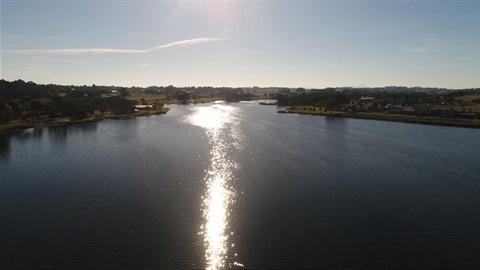Water Quality- Lake Hamilton

Lake Hamilton is fed by urban stormwater overland flow and Grangeburn, which runs through predominately agricultural land. Water flowing into Lake Hamilton contains nutrients, sediment, E. coli and salt, which impedes the lake’s water quality.
Large quantities of nitrogen and phosphorus from animal manure, on-farm superphosphate applications, garden fertilisers and detergents act as a nutrient source for the blue-green algae to grow and flourish, leading to the current water quality problems. Animal manure, dog faeces and sewage which is not properly disposed of may contribute to elevated E-coli levels in water bodies particularly during high rainfall and flood events.
Council has undertaken a number of Lake Hamilton water quality improvement projects, including installation of swales to assist with the removal of contaminations from the stormwater prior to the water entering Lake Hamilton. Working in partnership with Glenelg Hopkins Catchment Management Authority and landholders Grangeburn upstream of Lake Hamilton, installing fencing to the protect edge of the Grangeburn eroding and prevent cattle polluting the Grangeburn water.
The Department of Energy, Environment and Climate Action (DEECA) is the Control Agency for blue-green algae blooms DEECA including the management of blue green algae in waterways and issuing water quality warnings.
Council visually monitor Lake Hamilton for blue green algae and notify DEECA when blue green algae is seen.
DEECA can be contacted:
https://www.deeca.vic.gov.au/
Phone: 136 186
PO Box 500 East Melbourne Vic 8002